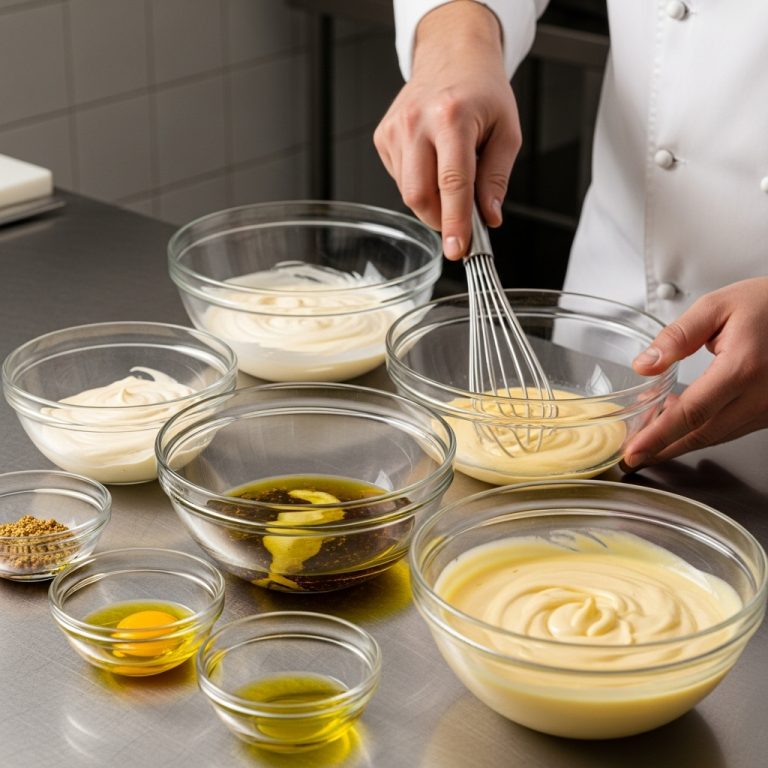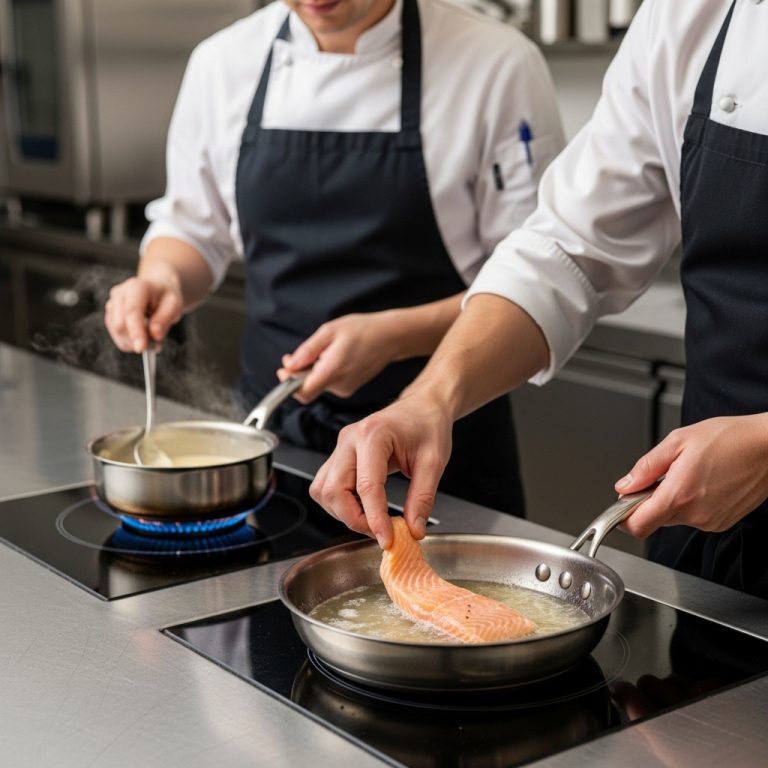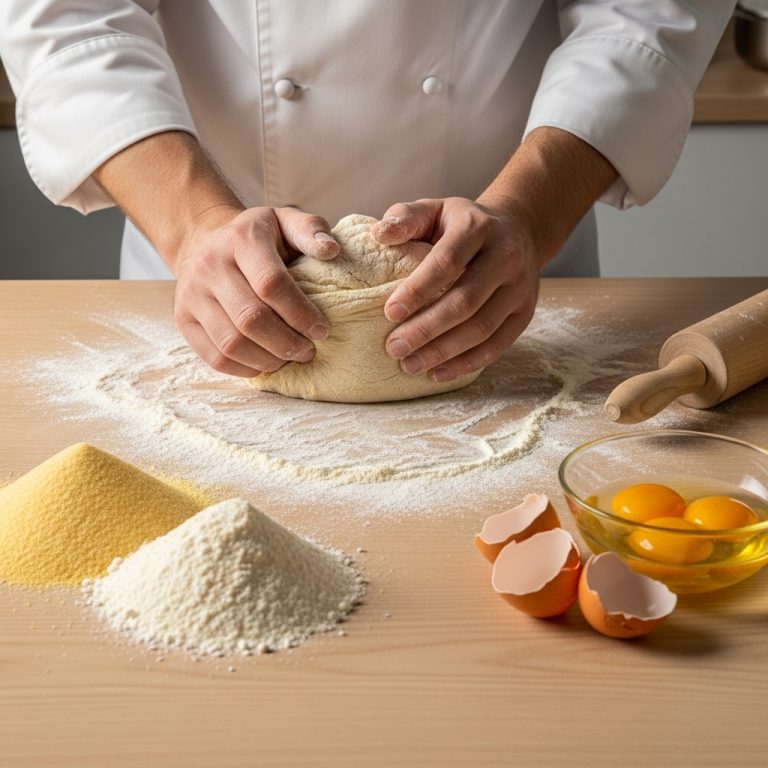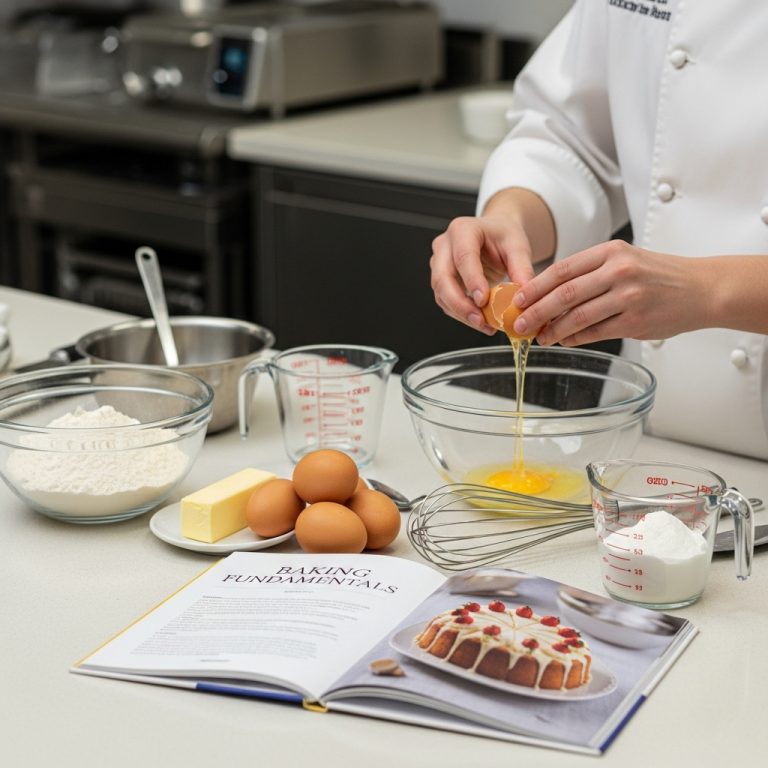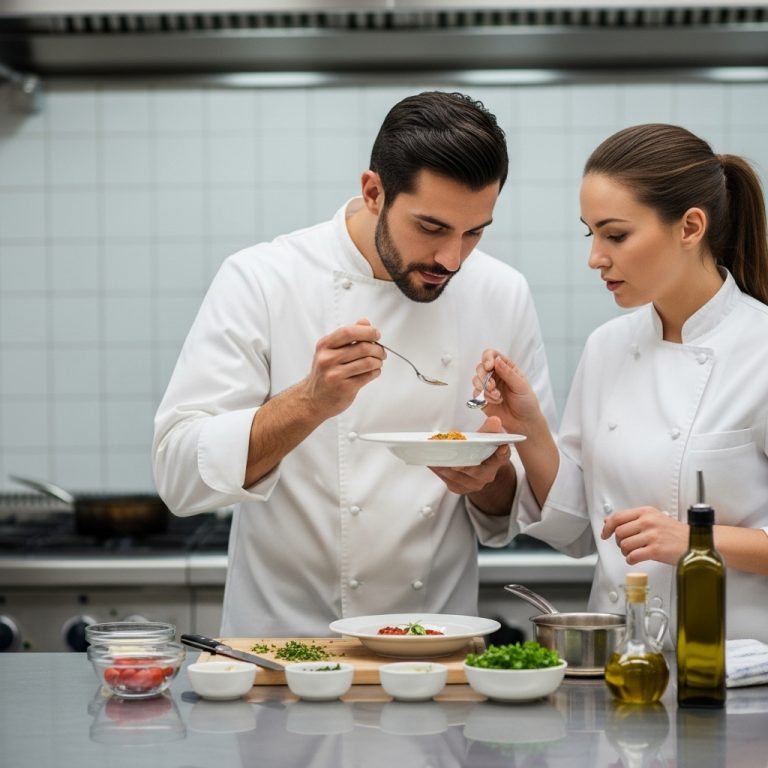Knife Skills Masterclass
Objective: By the end of this lesson, students will be able to master basic knife skills, including chopping, dicing, slicing, and mincing.
Core Concept: Knife skills are essential in any kitchen for preparing ingredients efficiently and effectively. In this class, we will focus on proper techniques for cutting vegetables, herbs, and proteins, as well as the importance of maintaining a sharp knife.
Tools & Setup:
1. A set of high-quality knives (chef’s knife, paring knife, serrated knife, and a sharpener)
2. Cutting board
3. Sharpener or honing rod
4. Variety of vegetables, herbs, and proteins for practice
5. Knife safety gloves (optional)
6. Protective guard or towel to cover hand when slicing
Step-by-Step Practical:
1. Begin by holding the knife correctly. Your index finger should rest against the spine of the blade for control, and your thumb will rest along the handle. Use your other fingers to grip the handle firmly.
2. Start with a dull knife, and use the sharpener or honing rod to sharpen it before starting. A sharp knife is safer and more efficient.
3. Choose a cutting board that’s non-slip and has a moat around the edge to catch juices. Place your non-dominant hand at the base of the blade for stability, with your fingers curled under the handle.
4. For chopping, place the vegetables on the board, and hold the knife above them. Use a rocking motion with your dominant wrist, keeping the blade sharpened edge facing upwards. Lower the knife to just touch the cutting surface, then raise it again before making contact with the ingredients. Repeat until all the items are chopped into equal-sized pieces.
5. For dicing, hold the item firmly on the board and use a combination of rocking and downward slices to create cubes. The goal is to have uniform pieces about 1/2 inch square.
6. To slice thinly, first cut the ingredient into smaller portions, then place one piece at a time on the board, holding it securely with your non-dominant hand. Use a gentle sawing motion with the knife’s edge facing downwards to achieve thin slices.
7. For mincing, start by slicing the item as thinly as possible, then stack the slices and chop them into smaller pieces until you reach the desired consistency.
Culinary Science Insight:
A sharp knife is safer because it requires less force, reducing the chance of slippage and accidents. Additionally, a sharp knife makes cleaner cuts, which prevents bruising or mashing ingredients like tomatoes or garlic, preserving their texture and flavor.
Pro Tips & Variations:
– Always cut away from your body and use the entire length of the blade for more efficient cutting.
– When handling slippery items like onions or tomatoes, try using a damp paper towel to hold them in place.
– For precision slicing, use a serrated knife that can “cut” without crushing the item.
– Practice regularly to develop muscle memory and improve your speed and accuracy.
Homework / Practice:
Practice your newfound skills by preparing ingredients for a meal using the techniques you learned in class. Share your experience with fellow students, discussing any challenges or successes.
Reflection:
Consider how mastering knife skills has affected your confidence in the kitchen. Reflect on any areas where you’d like to continue improving and set goals for future practice sessions. Remember that consistency is key when it comes to developing advanced knife skills, so make time to practice regularly.


